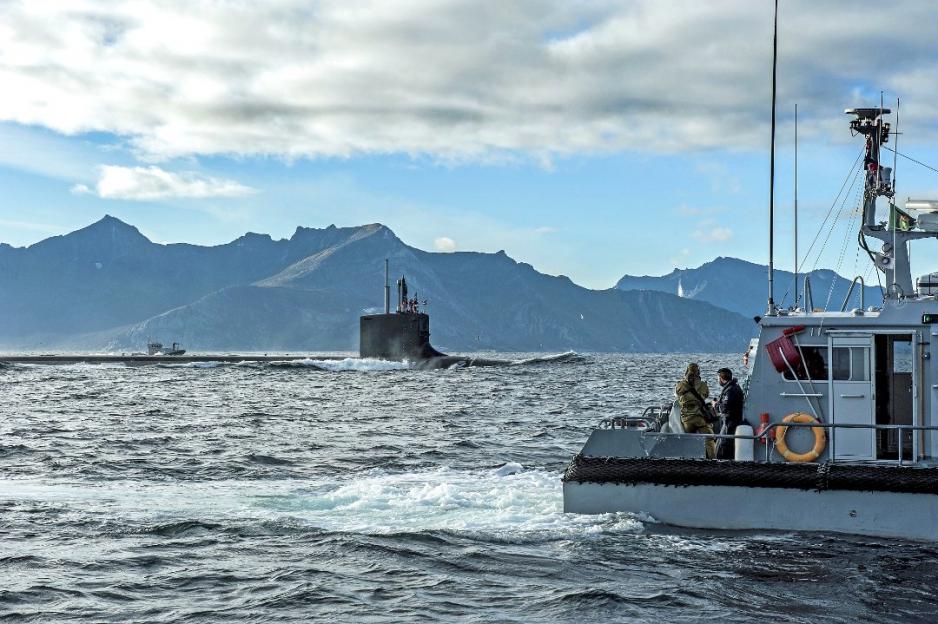Newsletter As the sea ice in the Arctic melts, the great powers move closer

In recent years, there have been several calls by nuclear submarines to open waters outside Tromsø i Northern Norway. Here is an American nuclear submarine that carries out what the Armed Forces describes as an "administrative stop" off Kvaløya in October 2016. (Photo: Eirik Bjørklund / Nordlys)
With climate changes taking place at a quick pace, new challenges, opportunities arise along with a new kind of proximity between the superpowers. This is a summary of the past week as seen from the North.
Value creation in the High North is often a matter of debate. Too much so, some will argue. Because pretty words mean nothing if not followed by action. And action is just what is warranted.
High North News’ Editor-in-Chief Arne O. Holm is not much impressed with the Norwegian Confederation of Enterprise’s recent document, void of any content:
“NHO’s map for a future Norway does not even contain a side-track to the High North”, Holm writes in his Friday commentary.
Climate changes change threat perceptions
Climate changes create an unpredictable future for the High North. Melting sea ice has consequences for security policies too.
“The natural protection of Russia’s vulnerable flank towards the USA provided by sea ice is about to melt away”, says researcher Ina Holst-Pedersen Kvam at the Royal Norwegian Naval Academy to High North News.
And Norwegian forces Wednesday trained with American B-53 bombers in the Lofoten area and Troms (Norwegian only).
“The USA and China are linked in ways that are very different from how the USA and the Soviet Union were in the previous super-conflict”, says Professor Øystein Tunsjø at the Norwegian Institute of Defense Studies.
Record-Heat in the Arctic Causes Problems
The Norwegian Met Office reports of record-heat in Svalbard in August, with an average temperature of 2.5 degrees Celsius above normal (Norwegian only).
At the same time, the mining industry in the Arctic is fighting a hard battle against thawing permafrost, a battle it appears to be losing.
It may be too late to turn this development around, and scientists argue that the measures taken are too weak.
“It is about time the Arctic receives the
same level of protection as Antarctica”, says Ocean Scientist Bryan Comer to High North News.
Also read: Nils Andreas Stensønes (56) has been appointed new Norwegian Intelligence Chief.
With that, our editorial staff wish you all the best for the upcoming week. Do not forget to let us know what goes on in your Arctic!
Best regards,
Trine Jonassen
News Editor, High North News




